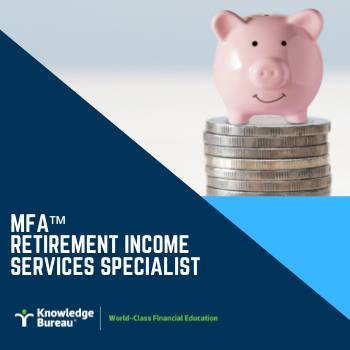Last updated: February 09 2022
Don’t Forget the RRSP Deadline!

José L. Riquelme, CPA, CGA
It’s the dream of millions of working Canadians to one day go into retirement and enjoy the golden years at home or abroad, retire on their terms, and harvest the fruits of their labours. According to a pre-pandemic (Feb 2020) Scotiabank Retirement Survey, 68% of Canadians are saving for retirement and the average amount expected to be needed was about $697,000. This is less than the 2017 average of $753,000. But the pandemic has changed retirement planning even further, and it’s important to discuss this before the March 1 RRSP deadline.
The pandemic has left a lot of people worse-off financially, especially those who have also suffered the health effects of Covid-19 within their families. The cost of caring for a loved one can be staggering, especially if that person is elderly. In Canada, about 8 million people are caregivers, which is about 25% of the population. They contribute with their time and there savings often to the deteriment of their own retirement security.
For these and other reasons, the amount of savings for retirement may have dropped for some families, whereas the needs for financial support may have risen. Therefore, an extra effort to  have a disciplined approach to retirement savings, will be required, especially if this results in increased tax refunds to help pay for costs and increase refundable tax credits the household may qualify for. That’s an important message with the March 1 RRSP contribution deadline coming quickly upon us.
have a disciplined approach to retirement savings, will be required, especially if this results in increased tax refunds to help pay for costs and increase refundable tax credits the household may qualify for. That’s an important message with the March 1 RRSP contribution deadline coming quickly upon us.
Statistics Canada in its latest “Life expectancy report” has indicated that the average life expectancy of Canadians is 81.97 years for females and males combined, 84.11 years for females, and 79.82 years for males. These numbers have remained relatively steady from 2014 to 2020, but have recently dropped by approximately 6 months. Nonetheless, steady performance of private savings, for example within RRSPs is required to counter increasing inflation, taxes and continued market volatility.
There is some, but not complete comfort with supplementary public pension funds. The “contributory” pillar of social security in Canada is the CPP. While indexed, the average Canada Pension Plan (CPP) benefits paid to new beneficiaries in 2021 was only $702.77. To receive the maximum for 2022 at age 65 of $1,253.59the “stars would have to be aligned”. That is, a person would have to work continuously from age 18-65 and earning the maximum pensionable earnings ($64,900 for 2022). This is very unlikely.
Meanwhile, the maximum monthly benefit for Old Age Security (OAS), the universal pillar of the Canadian social security system, is $642.25 for 2022. (This is an income-tested benefit, however, but there is no clawback if the income is lower than $81,761). As of July 2022, seniors aged 75 and over will get an additional 10% in benefits.
In 2022, a 65-year-old pensioner who receives the maximum OAS and the average CPP and no other source of income, will have about $16,140.24 in taxable income. This income is offset by the Basic Personal Amount and the Age Amount, and therefore little or no tax is payable depending on the province of residence.
In addition, a single, widowed or divorced pensioner would receive an extra $11,511.12 ($959.26 x 12 months) from the Guaranteed Income Supplement (GIS) for a grand total of $27,651.36 (if the pensioner has a spouse, benefits will vary). If we factor in ever increasing housing costs, health care, food, transportation, with a life expectancy of 80-84 years, this income may not be enough to enjoy the necessities within the golden years without supplementary private savings.
Therefore, it is crucial to take advantage of the Registered Retirement Savings Plan (RRSP) to supplement income at retirement. This is so not only because of its favorable tax treatment – contributions are deductible up to the allowed limit and amounts invested enjoy tax deferred growth – but also because this source of pension income will extend the financial independence that Canadians yearn for at retirement.
The deadline to contribute for the 2021 tax year is fast approaching this March 1, 2022. Make an effort to contribute as much as you can based on the limits described in your 2020 Notice of Assessment. It is a good practice to take this document with you when you are making an RRSP contribution to avoid overcontributions that may result in penalties (you are allowed a maximum of $2,000 overcontributions; after this limit you must pay a tax of 1% per month).
Also, take into consideration that due to Covid-19 restrictions, financial institutions and/or independent financial advisors may have limited appointments available. Some taxpayers may consider using online brokerage options; however retirement planning as part of an overall wealth management plan will maximize tax-efficiency both now and later in the years of withdrawal. It could also increase social benefit payments and refundable and non-refundable tax credits. A tax specialist can help with the calculations.
The ideal scenario is to save frequently, hopefully monthly, for retirement and other financial goals. Nevertheless, it’s better to contribute on March 1 than to miss the deadline. Make a habit to save for retirement and “Don’t forget the RRSP deadline!”
Additional educational resources: check out the newly updated Tax-Efficient Retirement Income Planning certificate course. The leading-edge program is designed to provide structure and process for advisors interested in specializing in tax-efficient retirement income planning. This is a skillset in great demand by the baby boomer demographic—the most affluent generation in our history—who seek credible, expert solutions to their complex retirement planning requirements, and view tax erosion as the biggest threat to their wealth.

